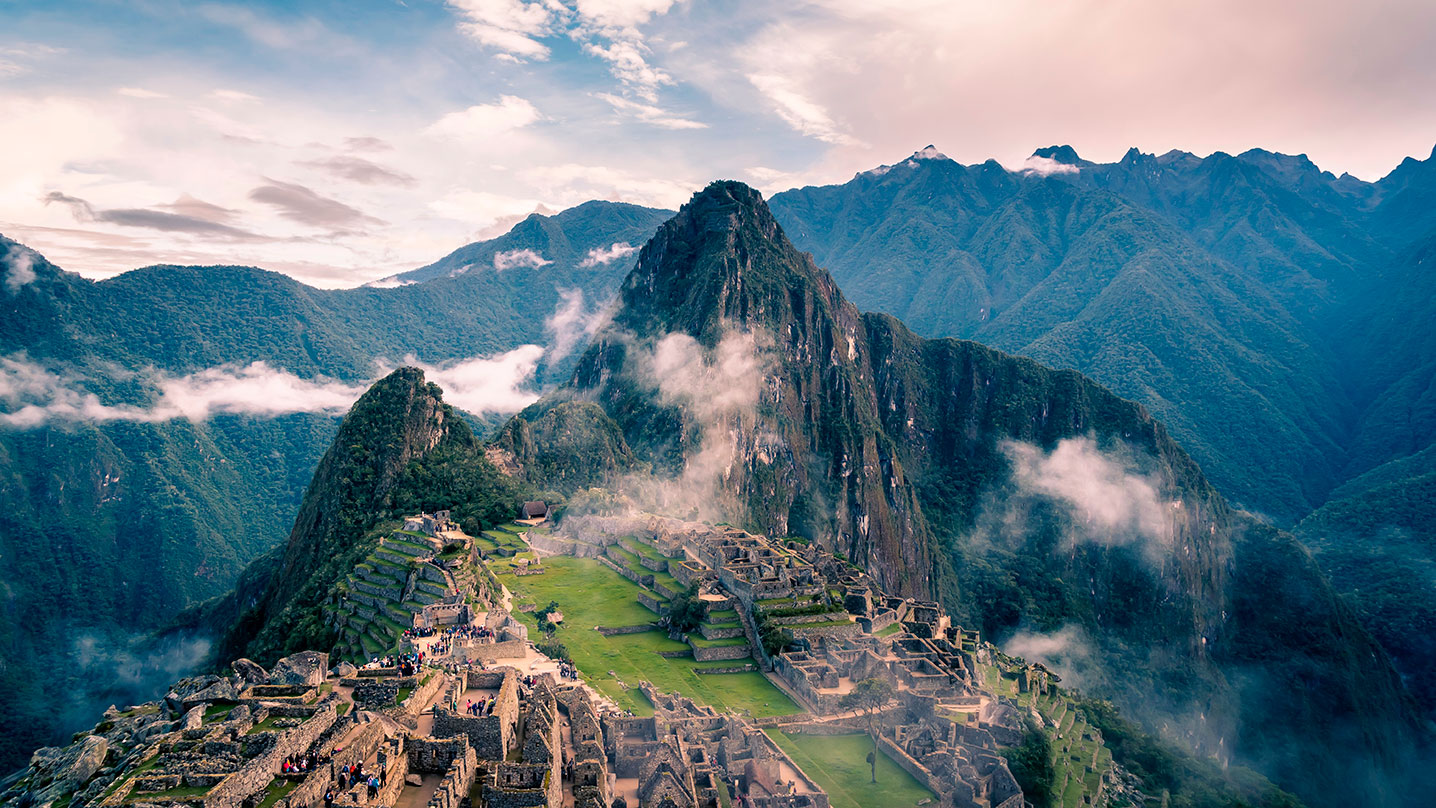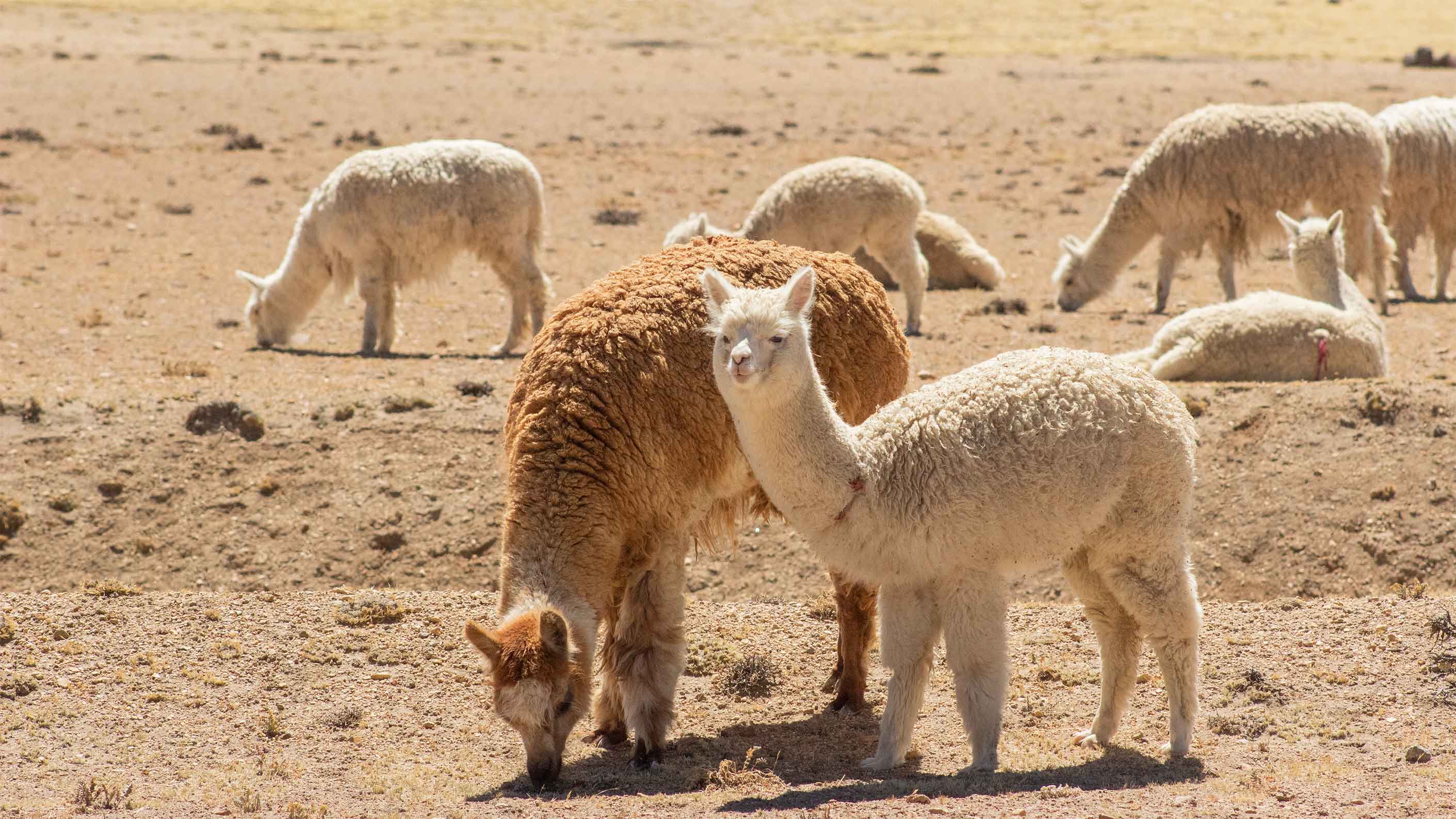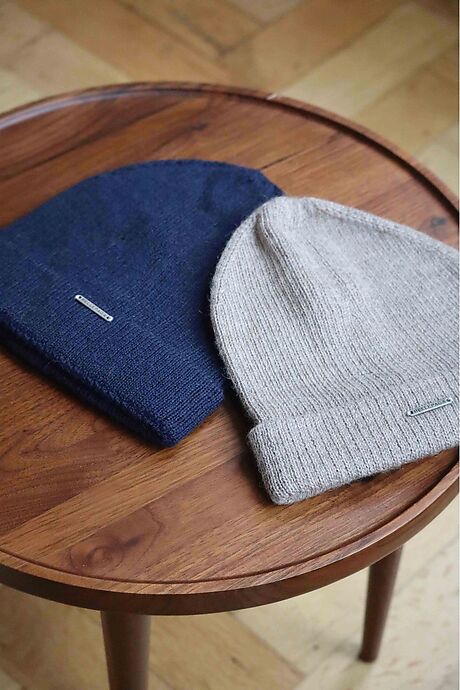Alpaca Clothing

Today, for wool production we find Alpaca in the wild but also farm bred. However, in most cases, they find themselves far from their natural environment and lose their need to adapt to it. However, when we know that the Andes Cordillera in Peru benefits from an extremely rich environment, it may seem regrettable to favour the loss of one of the greatest properties of its wool, thermoregulation. Indeed, in its natural environment, Alpaca is confronted daily with temperature differences of up to 30 degrees Celsius. These variations allow it to develop a much more insulating fibre than if it were in a more stable weather environment.
In this article, you will discover why Alpaca wool clothing is THE natural solution to many of the disadvantages found with other materials. After reading, you will appreciate even more the energy BellePaga puts into selecting the fibre used to make our wool clothing.

Alpaca Clothing
Did you know that in addition to being sweet and cute, our Alpacas live in total freedom in the Andes? One of our values is to offer you the highest quality products, starting with the quality of the material used. We could have prefered other wools, such as sheep's wool, or some of the best-known cashmere wool. However, we have chosen to present our Alpaca wool clothing because it is the animal that best represents all the values conveyed by BellePaga. By reading our article, you will quickly understand why Peruvian Alpaca wool clothing is so popular.
In our Alpaca clothing collection, you will find ponchos and sweaters made of Alpaca wool for women as well as alpaca wool sweaters for men. Depending on the models, all our Peruvian wool sweaters are made entirely or essentially of this soft fibre.
Throughout the world, Alpaca fibre is considered luxurious because of its unique properties such as softness, strength, hypoallergenic fibres, very high thermal effect, and light weight. It is elastic and strong, providing comfort and durability to your Alpaca clothing.

Alpaca Wool
To date, there are different types of Alpaca fibres. We find the fiber commonly called Alpaca fiber, baby Alpaca fiber, and royal Alpaca fiber.
It is the diameter of the fibre, the mowing areas, and the quantity of mowing that classify each fibre into a separate category. To compare, here are some figures.
- Alpaca fibre: 23.1 to 26.5 microns
- Baby Alpaca fibre: 14 to 23 microns
- Royal Alpaca fiber: Result from the selection of the best and finest baby alpaca fibers whose diameter can go down to 12 microns.
All the fibres are sorted by our Peruvian collaborators, in order to keep only the softest ones.
It is interesting to know that the majority of Alpaca clothing offered by our brand comes from the baby Alpaca fibre. They make our BellePaga products with a traditional and unrivalled know-how. Each product is made or finished by hand for an exceptional quality. Next to each article, you will find the exact composition of it.
As you have read above, an important property of Alpaca wool is its hypoallergenic properties. Alpaca fibre being half wool/ half hair is the only one that does not contain lanolin. This substance is allergenic and is found in all classic wools. Alpaca wool also does not itch, its fibre being soft and fine. Our clothes are therefore suitable for anyone with more or less sensitive skin. Especially since Alpaca has a wide range of natural colours! Before the creation of Peruvian wool clothing, the fibres are washed only in soapy water, without going through the bleaching stage. When the desired shades are not found in the different colours of Alpaca, we use only mineral shades. Before that, however, we still favour mixing fibres of different colours to achieve the desired result.
This way, we avoid any chemical procedure that could attack your skin.
Alpaca fibre also has thermoregulatory properties that keep you warm despite its thinness, while being a breathable, moisture-repellent fibre that does not cause perspiration.
In addition to all these benefits, Alpaca wool is ecological. Unlike cotton or cashmere, it does not use litres of water in its production and does not come from an animal with a large ecological footprint. Alpaca is an animal that does not damage the soil on which it lives: The pads on its feet flatten the ground without turning it over and do not destroy vegetation. When it eats, it does not remove the root of the grass, so it can continue to grow.
Each BellePaga Alpaca garment is made in Peru to limit polluting travel and is sent in environmentally friendly packaging.
Alpaca fibre also has thermoregulatory properties that keep you warm despite its thinness, while being a breathable, moisture-repellent fibre that does not cause perspiration.
In addition to all these benefits, Alpaca wool is ecological. Unlike cotton or cashmere, it does not use litres of water in its production and does not come from an animal with a large ecological footprint. Alpaca is an animal that does not damage the soil on which it lives: The pads on its feet flatten the ground without turning it over and do not destroy vegetation. When it eats, it does not remove the root of the grass, so it can continue to grow.
Each BellePaga Alpaca garment is made in Peru to limit polluting travel and is sent in environmentally friendly packaging.
In our Alpaca clothing collection, find our woolen sweaters for men and women as well as our Alpaca ponchos. You can wear them on cooler summer evenings as well as on harsh winter days.
The care of Alpaca clothing is simple. Our socks can be machine washed at 30 degrees, but for the rest we recommend hand washing or dry cleaning at 10 to 20 degrees. Alpaca wool is one of the few fabrics that do not give off any odour when dry. Drying in a dryer is strongly discouraged, the best is to dry the garment in the open air, flat so as not to relax the fibres. Ironing is not necessarily necessary, but if it is, it is recommended to put a cloth between your wool garment and the iron. (See Care)
The care of Alpaca clothing is simple. Our socks can be machine washed at 30 degrees, but for the rest we recommend hand washing or dry cleaning at 10 to 20 degrees. Alpaca wool is one of the few fabrics that do not give off any odour when dry. Drying in a dryer is strongly discouraged, the best is to dry the garment in the open air, flat so as not to relax the fibres. Ironing is not necessarily necessary, but if it is, it is recommended to put a cloth between your wool garment and the iron. (See Care)
For more pleasure, you can also combine them with our accessories. Among them, you will find baby Alpaca scarves, slippers, our Alpaca wool and Pima cotton socks, our hats, and gloves for the cold.
Quickly discover our Alpaca clothing, accessories, and wool items for your home on our BellePaga.com website.
-
Alpaca fur key ring
19,90 €
-
Sunimax Scarf
109,00 €
-
Apocuna Scarf
159,00 €
-
Beanie Cari
89,00 €
-
Apocuna Scarf
159,00 €










